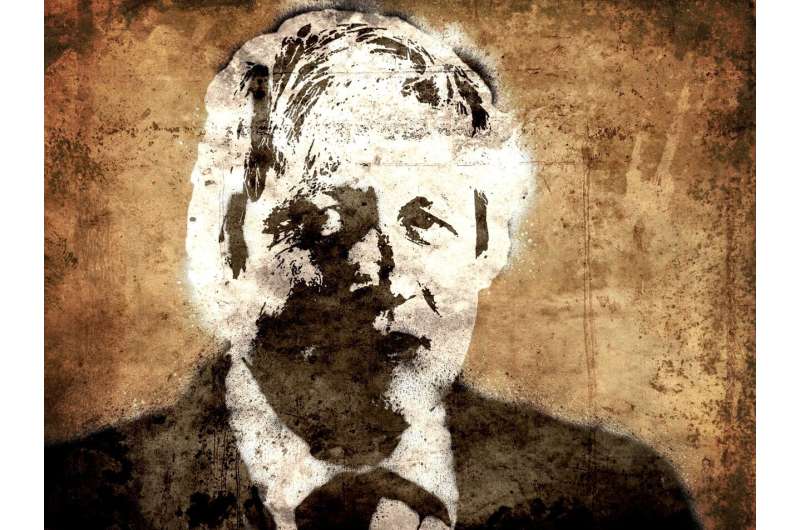This article has been reviewed according to Science X's editorial process and policies. Editors have highlighted the following attributes while ensuring the content's credibility:
fact-checked
peer-reviewed publication
trusted source
proofread
It's all in the smile: New research finds politicians can influence voters with facial expressions

New research led by Aston University's Dr. Carl Senior has found that the type of smile used by a political leader can influence voters to support them and their political agenda. The research is published in the journal PLOS ONE.
There are many different types of smile, and the researchers, including Professor Patrick Stewart from the University of Arkansas, Professor Erik Bucy from Texas Tech University and Professor Nick Lee from Warwick Business School at the University of Warwick, UK, focused on two in particular—the "reward" smile and the "affiliative" smile. They used videos from political leaders from the 2019 UK general election, which was won by the Conservative party, then led by Boris Johnson. The Labour party, then led by Jeremy Corbyn, came second. Jo Swinson was the leader of the third-placed Liberal Democrat party.
The "reward" smile is the genuine ("felt") smile, associated with joy and enthusiasm. It is the smile most likely to be contagious with onlookers, and has been linked to higher levels of trust. The "affiliative" smile, meanwhile, communicates approachability, acknowledgement, and appeasement. It is associated with an affinity towards the onlooker and is thought to be important for developing cooperative relationships.
The researchers selected volunteers professing to be supporters of each of the three main parties and showed them the same video footage of the three leaders—Johnson, Corbyn and Swinson—before and after the 2019 election. The team assessed the emotional response to the different smiles for the candidates, whether positive (happiness and affinity) or negative (anger and distress).
When shown footage of election winner Johnson's affiliative smile after the election, people in all groups showed an increase in happiness and affinity compared to when they were shown the footage before the election. Supporters of the losing parties showed an overall decrease in the negative effect. It was only this affiliative smile that was found to act as a mechanism to align voter feelings and behavior to the dominant (winning) political message.
The reward smile did not have the same effect. Supporters of Labour showed an increased level of anger and distress when viewing Johnson's reward smile after the election compared to before it.
The effects for Corbyn and Swinson were less marked, showing that they failed to significantly change voters' responses to them. Their appeal was somewhat fixed and failed to match Johnson's charm. Johnson tapped into the voters' feeling of annoyance about the slow Brexit process with his "Get Brexit done" slogan, while Corbyn's position was ambiguous. Swinson's party was pro-Europe but lacked Johnson's performative abilities to link a strong message to his nonverbal communication.
Previous work by various researchers has shown that observers judge leadership traits and behavior, or a lack thereof, from non-verbal cues such as facial expressions. However, until now there has been little research outside the US on the effect of facial displays on voter behavior.
Dr. Senior said, "The human smile can convey both rewarding and affiliative social intent and thus has significant utility in politics, where the ability to bond with and reassure voters is vital to electoral success. We are in an unprecedented year as there are numerous elections scheduled to take place across several continents. The outcome of these campaigns will have a significant impact on millions of people across vast geopolitical regions. Given that almost all politicians involved in these election campaigns will make full use of broadcast media to reach voters, it is crucial to understand the effectiveness of their non-verbal displays in shifting voting preference."
Professor Lee added, "The individual appeal of party leaders has become increasingly influential. A smile can't win an election on its own. But Johnson's personal appeal transcended party policies, connecting with people who hadn't planned to vote for him. The upside for today's politicians is that charisma is not an innate quality. It can be taught. By paying attention to their facial behavior and ensuring they display the right smile in the right context, they can still leverage the power of emotional responses. It is something leaders of all organizations can learn."
The researchers say more work is required to understand how smiles work together with other verbal and nonverbal displays to generate affinity in voters and convey social dominance to other leaders.
More information: Carl Senior et al, Winners and losers: Emotional shifts across elections are conveyed by a politician's smile, PLOS ONE (2024). DOI: 10.1371/journal.pone.0301113
Journal information: PLoS ONE
Provided by Aston University





















